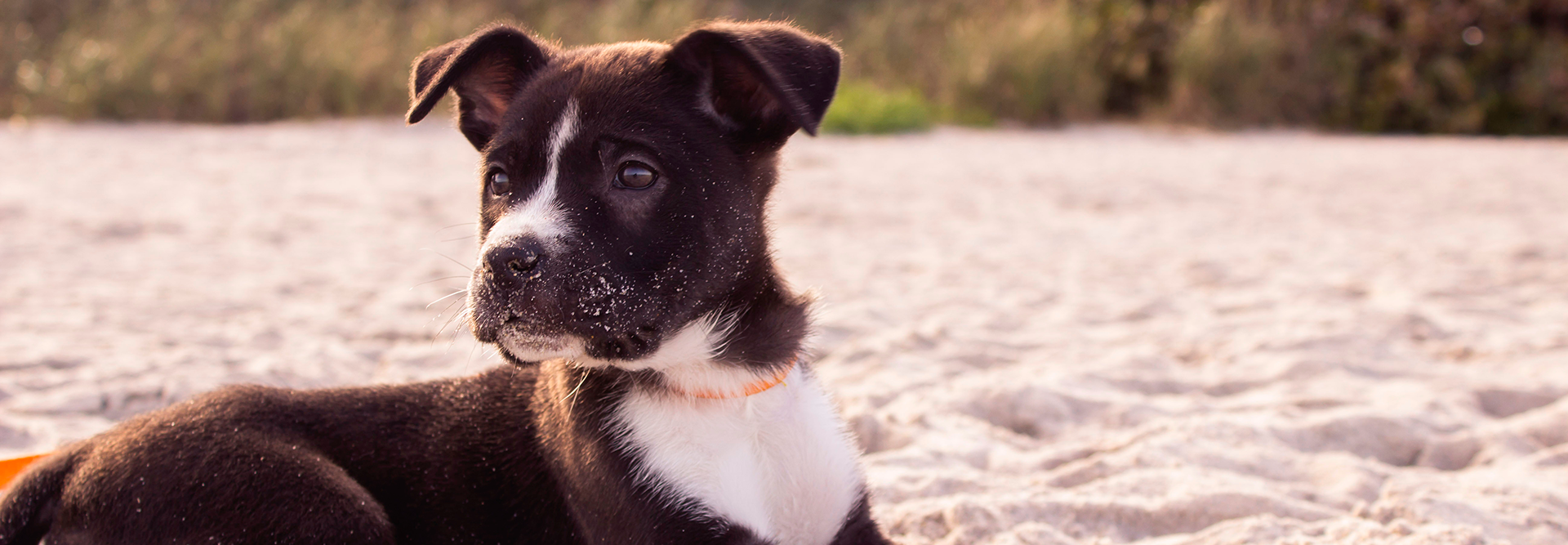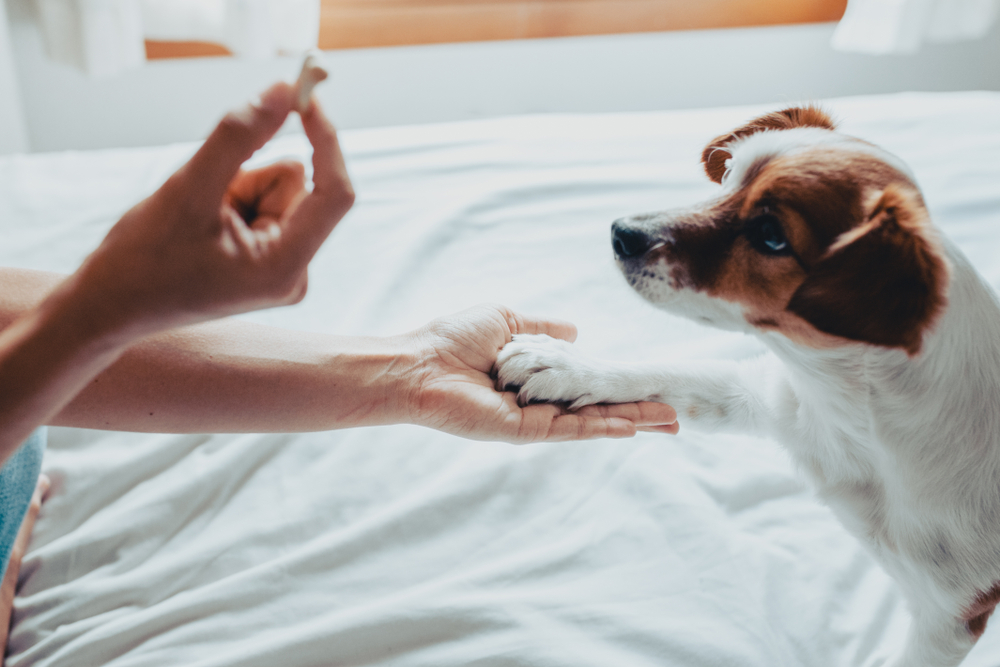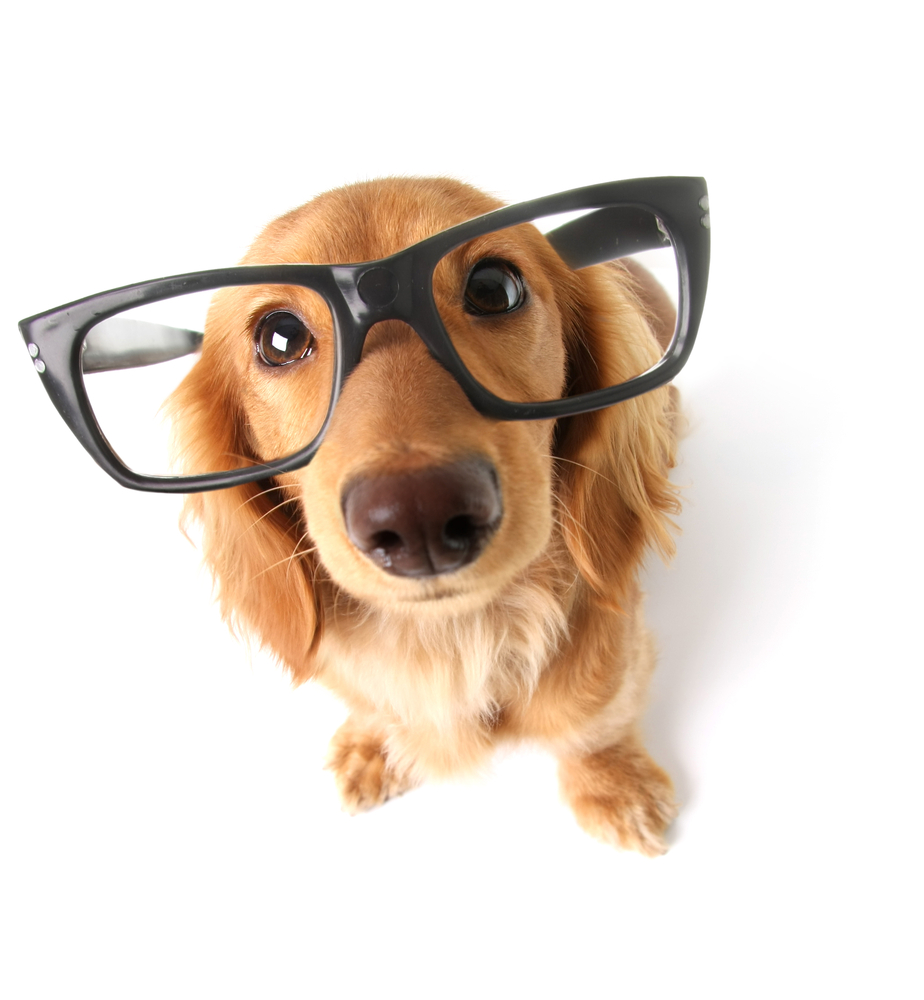
Your brand-new fur baby has quite the personality! Puppies are affectionate, goofy, and highly intuitive to the emotions of their pet parents. Because of this, it can be easy to assume that your puppy is a little human trapped in a fluffy body! If on some level you kind of believe this, you wouldn’t be […]
Your brand-new fur baby has quite the personality! Puppies are affectionate, goofy, and highly intuitive to the emotions of their pet parents. Because of this, it can be easy to assume that your puppy is a little human trapped in a fluffy body!
If on some level you kind of believe this, you wouldn’t be the first person to project human characteristics onto your dog. It’s a normal part of puppy parenthood. But the fact of the matter is that puppies are not people, they’re animals, and as animals they actually don’t possess intrinsic morals. Meaning, puppies do not know the difference between “right” and “wrong,” and they do not know what behavior is acceptable versus what behavior is unacceptable.
Knowing how puppies see the world can be a great puppy training motivator. And understanding what will happen if a puppy matures into an adult-age dog without any training can also powerfully inspire new puppy parents to commit to thoroughly training their puppies.
You’ll learn about all of this in our blog, so stick around to find out how puppies see the world!

As we mentioned during the introduction of this article, puppies are not born with intrinsic knowledge of understanding the difference between right and wrong by human definitions. They do, however, have a firm experiential understanding of “good” and “bad,” or more specifically, what they think is “good” and “bad” for them.
Teaching your puppy the difference between right and wrong so that he behaves correctly starts with you knowing what your puppy thinks is “good” and “bad.” Effective puppy training is all about showing your puppy through experience that if he does something “wrong” (by human standards) he will experience something “bad” (by his standards).
So, what do puppies think is “good” versus “bad”? We’ll take a look at this in the next section, so keep reading!
Since puppies are animals, anything that meets a need is considered good. On the top of this list are food and treats. And anything that takes a good thing away is considered bad, and so not receiving a treat is considered bad from your puppy’s point of view. This is why treats and food are always used during puppy training. When puppies receive the “good” treat for doing foreign behaviors that don’t come naturally (i.e. obeying a command or rule of yours) they learn to associate the strange behavior with goodness, and since they like goodness, they’ll continue to do the behavior.
Generally speaking, puppies agree that the following things are “good” and therefore you should provide your puppy with these things when he behaves the way you want him to:
Should you remove any of the items above, your puppy will associate the removal of the “good” thing as a “bad” consequence. This means that, for example, if he continues to nip and bite during playtime, and will not obey your “no” which tells him not to bite, you can discontinue playtime as a consequence. Your puppy will view this as “bad,” and will associate that biting must be “bad” because it causes the fun playtime to end.
Puppies view their experiences through the filter of, “Is this good or is this bad?” Or rather, “Am I getting something good or am I getting something bad?” You can use this to your advantage during training, as you now know.

If you originally clicked on this blog post because you wanted to learn about how your puppy literally sees the world, then we haven’t forgotten about you! Now that we’ve addressed the social and interpersonal ways a dog sees the world, we can take a look at their actual eyesight. This section is for you!
Humans have “binocular vision,” which means that because our eyes are in the absolute front of our faces, and do not angle away from one another, we see straight ahead with the clearest objects in the middle of our vision. Even though it may look like dogs’ eyes are in front of their face, their eyes are actually angled out at a 20 degree angle from one another. With some breeds, like the Pug, this can be exaggerated, and the angle of the eyeballs can be closer to 60 degrees! Thanks to this, dogs have a wider peripheral vision than humans.
Dogs can see much better in the dark because they’re more sensitive to picking up on light. Therefore they require less light in an environment in order to see. This doesn’t mean that they’ll be able to see in complete darkness. It’s not like their eyesight is comparable to night vision goggles or anything. But it is better than humans. So, why can our furry friends see better in lower light? While dogs’ eyes generally function the same way ours do, several differences in their eye anatomy give them distinct advantages. These include:
You may have heard that dogs are color blind. This isn’t entirely true. It’s not that dogs see in “black and white.” They see colors, but the range of colors is highly limited as compared with humans. Humans see a full rainbow spectrum of colors, and yet we don’t see every color. In fact, there’s an entire unseen realm of swirling ethereal light that magically surrounds us at all times! But that’s for another discussion board. To put things simply, while people typically see the 7 colors of the rainbow, dogs can only see the blues, greens, whites and off-whites, dull yellows etc, and blacks.
Typically, humans with 20 / 20 eyesight are said to have great eyesight and do not need glasses. But what does 20 / 20 vision mean? If you’re standing 20 feet away from a Snellen chart (a unique chart with letters in rows of varying sizes) and you can read the letters, you have 20 / 20 vision. Dogs have 20 / 75 vision. What this means is that whatever you can see and read at 75 feet away, they can see and read at 20 feet away. Yes, that means they are less able to see at a distance than humans.
That covers how puppies see the world! We hope you enjoyed this article! If you’re ready for a new puppy, we invite you to stop in any one of our Florida locations to meet our available puppies!